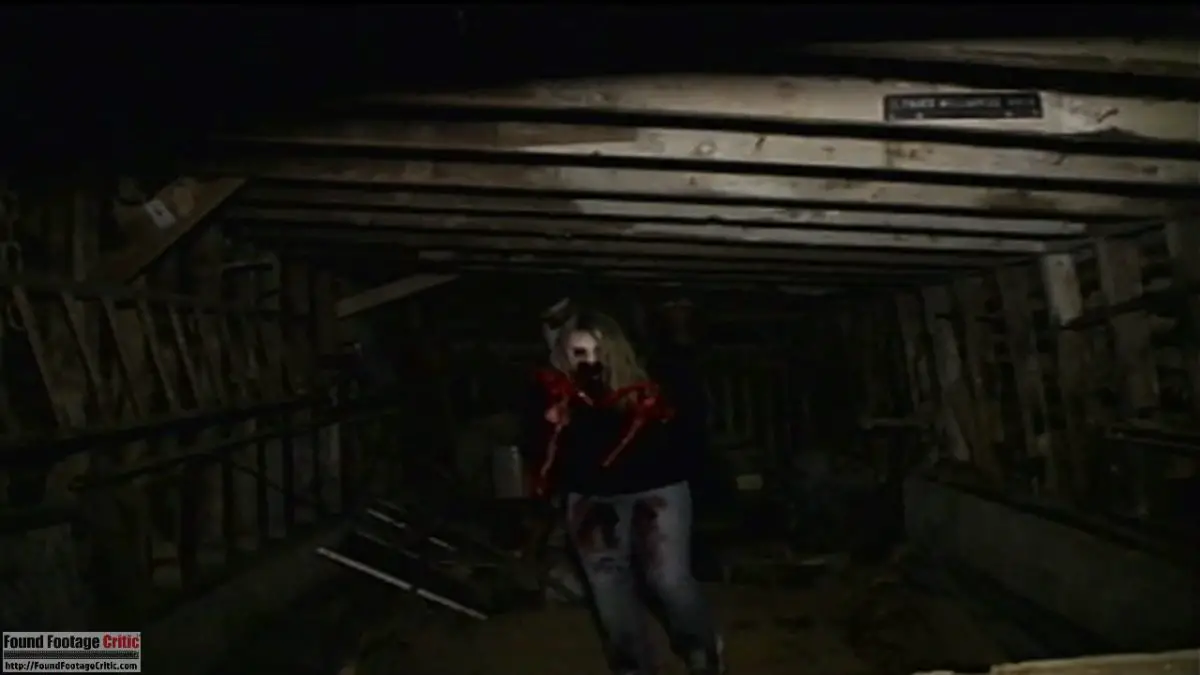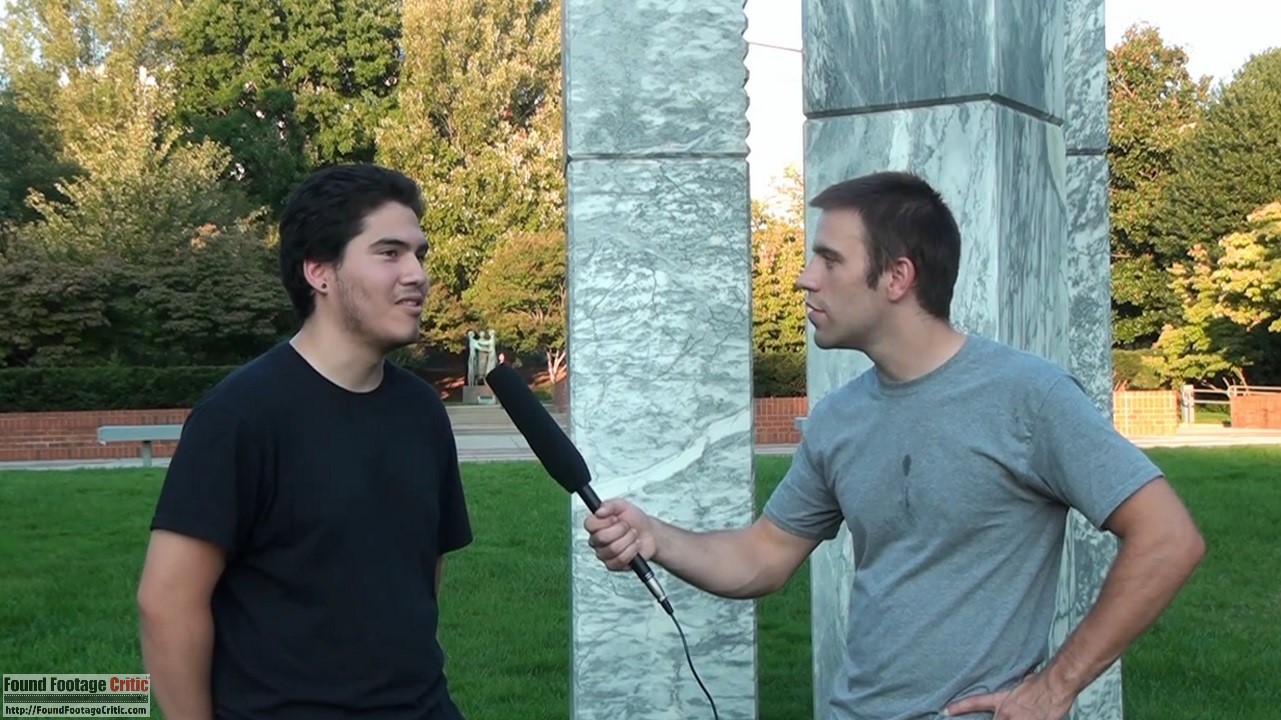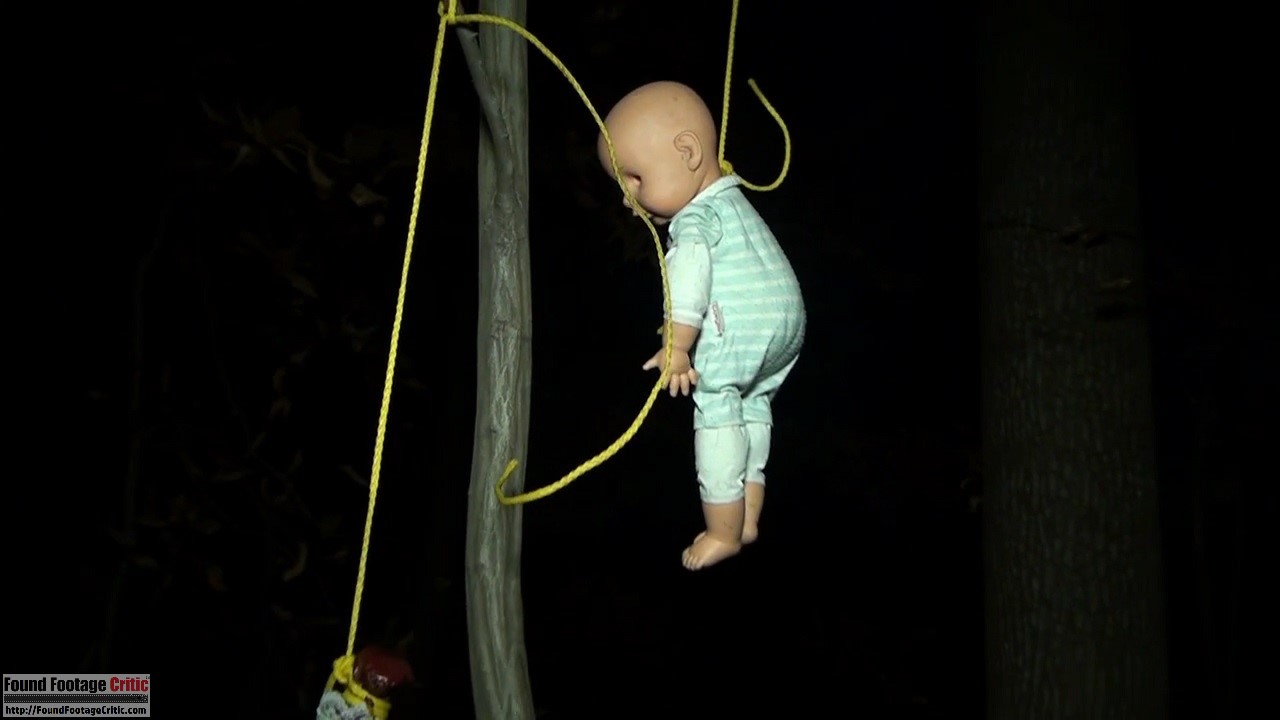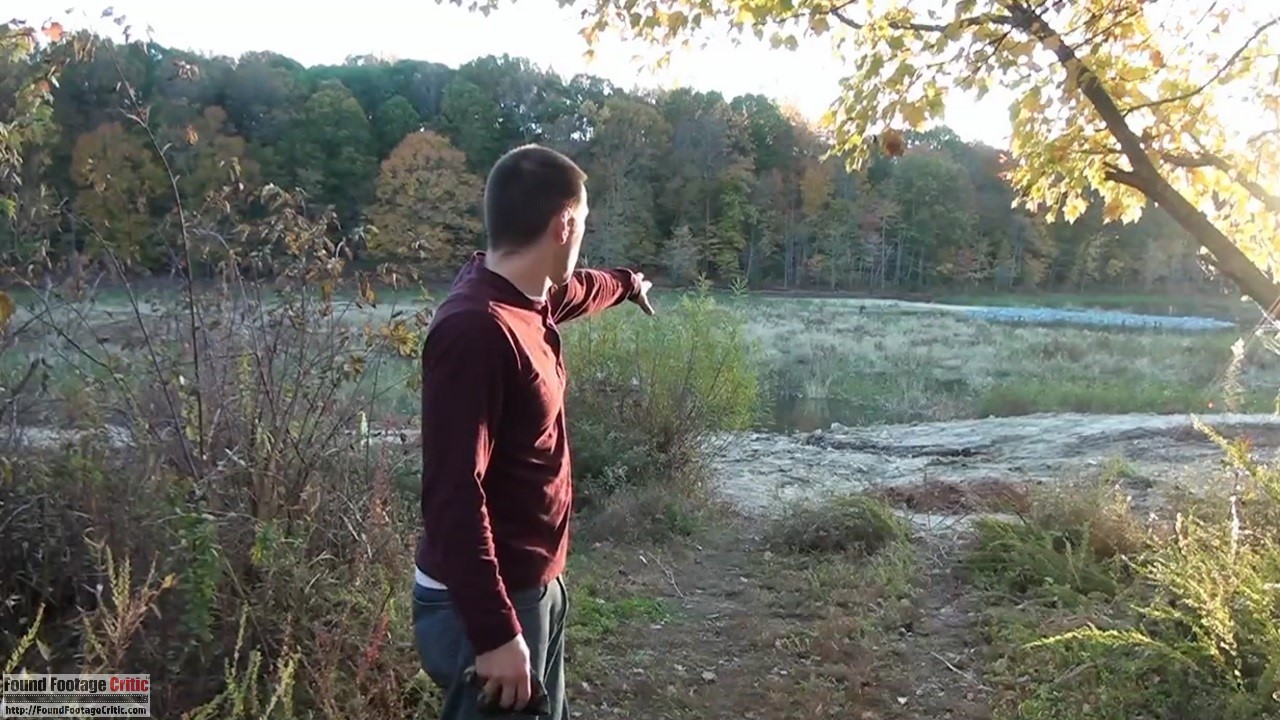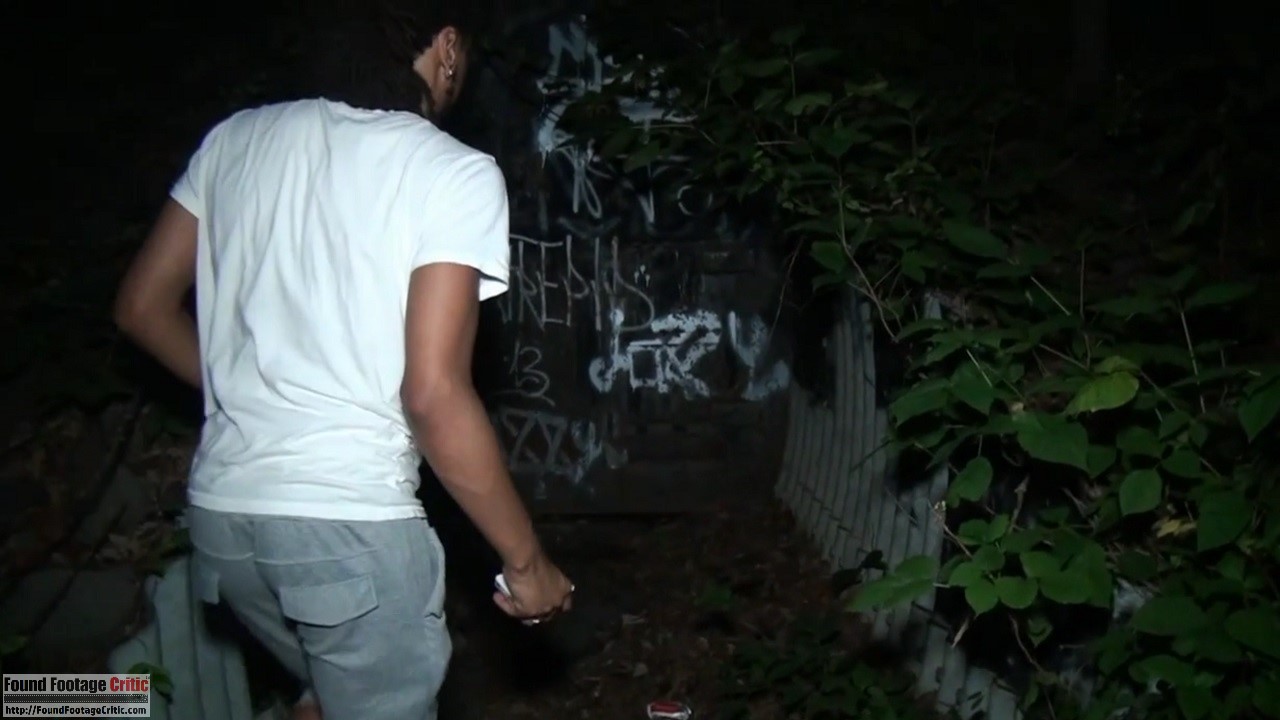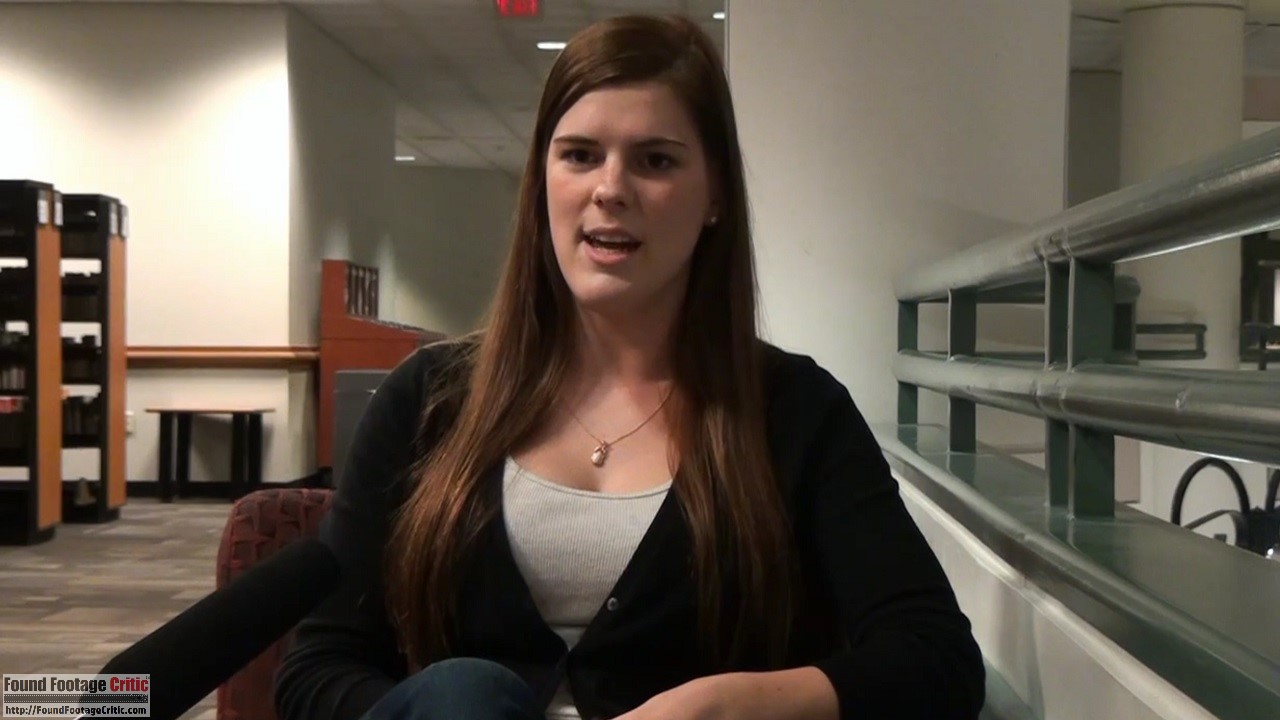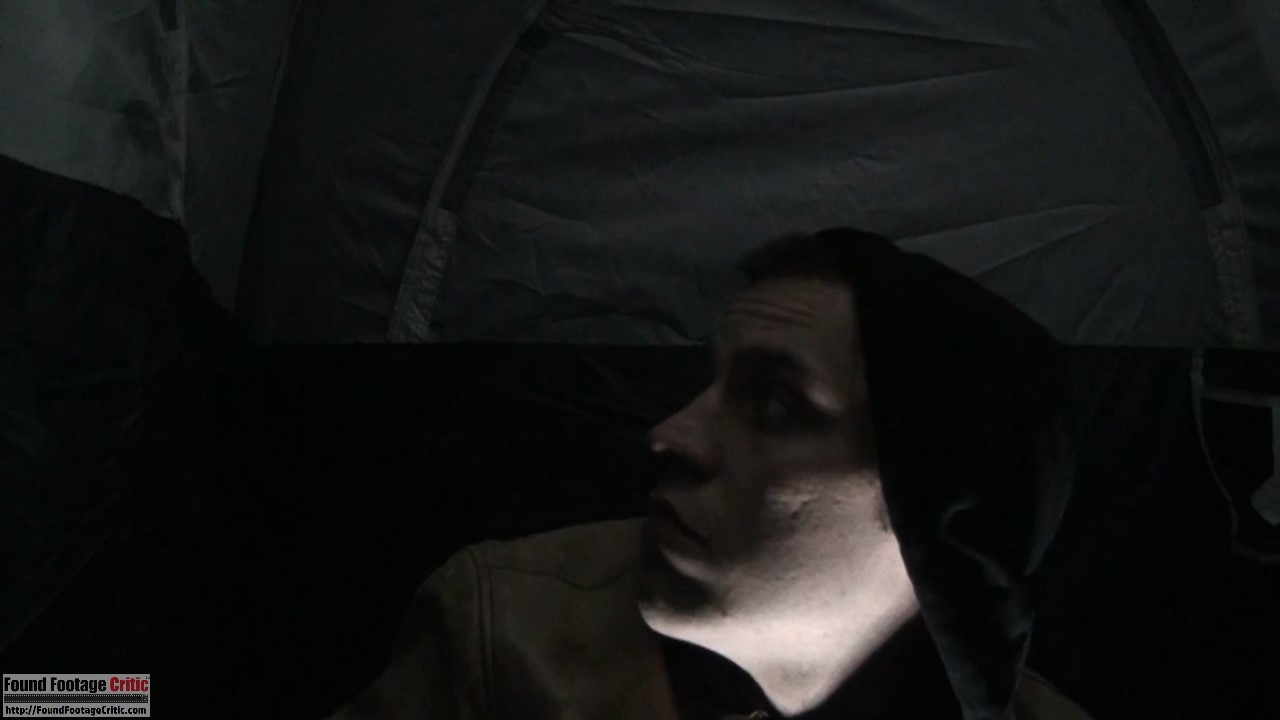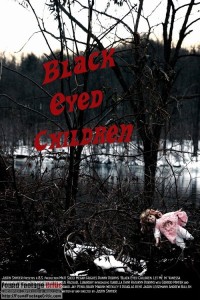 Black Eyed Children: Let Me In is an admirable found footage film from first-time writer/director/star, Justin Snyder. Snyder portrays an unnamed filmmaker, who is in the process of making a documentary surrounding the sightings of the titular Black Eyed Children. These mysterious children appear to seemingly random people, ask for access into their homes, and attack them violently or even cannibalistically. Our filmmaker speaks to several eyewitnesses and several “professionals” for the sake of uncovering the possible truths surrounding these supernatural encounters.
Black Eyed Children: Let Me In is an admirable found footage film from first-time writer/director/star, Justin Snyder. Snyder portrays an unnamed filmmaker, who is in the process of making a documentary surrounding the sightings of the titular Black Eyed Children. These mysterious children appear to seemingly random people, ask for access into their homes, and attack them violently or even cannibalistically. Our filmmaker speaks to several eyewitnesses and several “professionals” for the sake of uncovering the possible truths surrounding these supernatural encounters.
A quote from early on in this movie that speaks volumes is “We all have our own stories.” This film primarily takes place in a small town called Huntsman, where everyone knows everyone and everyone shares the same stories. To Huntsman as a whole, the Black Eyed Children represent the fear of the outside world or fear of the unknown. This story has become legend to these people, and therefore has become a part of their culture.
Plot Analysis
Our filmmaker is a man in search of a story. He’s an aspiring artist who has yet to discover his creative muse. Huntman’s legend of the Black Eyed Children becomes his story,despite his skepticism. Black Eyed Children: Let Me In could have benefited from letting the audience get to know the protagonist a little bit better. Who is he? Where is he from? Why is he making this video? What personal connection does he have to the Black Eyed Children phenomenon? Is he an outsider who’s discovered the story incidentally, or is he a victim of some kind, caught up in the web of obscure spiritualism and fear? Simply put, the film never lets the audience learn enough about this filmmaker in order to connect with him or his journey.
Throughout the film, many suggestions are made as to what the Black Eyed Children could actually be, including everything from demons and aliens to ghosts, vampires and even Jinn from Arabic folklore. If it’s true that the eyes are the windows into the soul, then the darkened eyes of these children suggest that these mysterious beings are soulless, hollow or even evil incarnate. Their desires and motivations can never be fully understood because their eyes prevent humanity relating to them as fellow humans. In the end, the dozens of possible explanations compiled in this film prove that it doesn’t really matter what these children really are, what matters is that they exist and they mean to terrify and destroy..
Black Eyed Children: Let Me In is ultimately a movie about environmentalism. As explained through the filmmaker’s research, the sightings of the children began after a series of deaths at Huntsman Lake, followed by the subsequent draining and dredging of the lake, and an ongoing tradition of teens throwing parties and disruptive hangouts nearby. The children’s arrival upon the destruction of the lake suggests the people of Huntsman are being punished for their desecration of and ignorance toward nature. As suggested by “Aries,” the psychic whom our filmmaker interviews, the children choose to single out individuals taking part in mature or adult behavior. Of the many interviews our filmmaker conducts, “Dale” encounters the children while playing violent video games, “Jackie” and her sister encounter the children while driving home from an extended vacation, “Elizabeth” encounters the children while cooking and housekeeping, and the teenagers recorded on a found footage tape played back near the end of the film are attacked by the children during a drunken, frivolous party. This suggests that the Black Eyed Children seek to forcibly revert the people of Huntsman to a more innocent state of existence, one from which they would be more inclined to respecting nature and their place within it.
Acting
The writing is one of the larger challenges faced by Black Eyed Children: Let Me In, and this in turn impacts the acting. The writing keeps the movie from being more immersive because people don’t talk this way or behave this way, and that takes away from the realism of the movie. Most of the visuals of the film, particularly those surrounding Huntsman Lake are done in a very straight forward way, which helps make the film appear more realistic, almost like a series of YouTube videos, but ultimately the writing just doesn’t come through and the characters are never fully developed. Found footage films typically benefit from down-to-earth or subdued performances, but many of the performances in this film come across as wooden and as a result the characters never present as real people describing real incidents. The actors in this film are unknowns, mostly on their first acting jobs. Sometimes first-timers can make a found footage film feel even more realistic… and other times they can also take the viewer out of a film if their performances don’t stack up, and unfortunately most of the performances here are just not up to par.
There are two particular scenes where the acting really impacts the effectiveness of the film. First, the acting of the professor whom the protagonist interviews via a video chat on his computer presents more a characterture rather than a real person; secondly and more importantly is the acting during the “found footage” tape happened upon by the protagonist, which is very challenged. This tape is one of the anchors to the plot, but loses its effectiveness due to the acting.
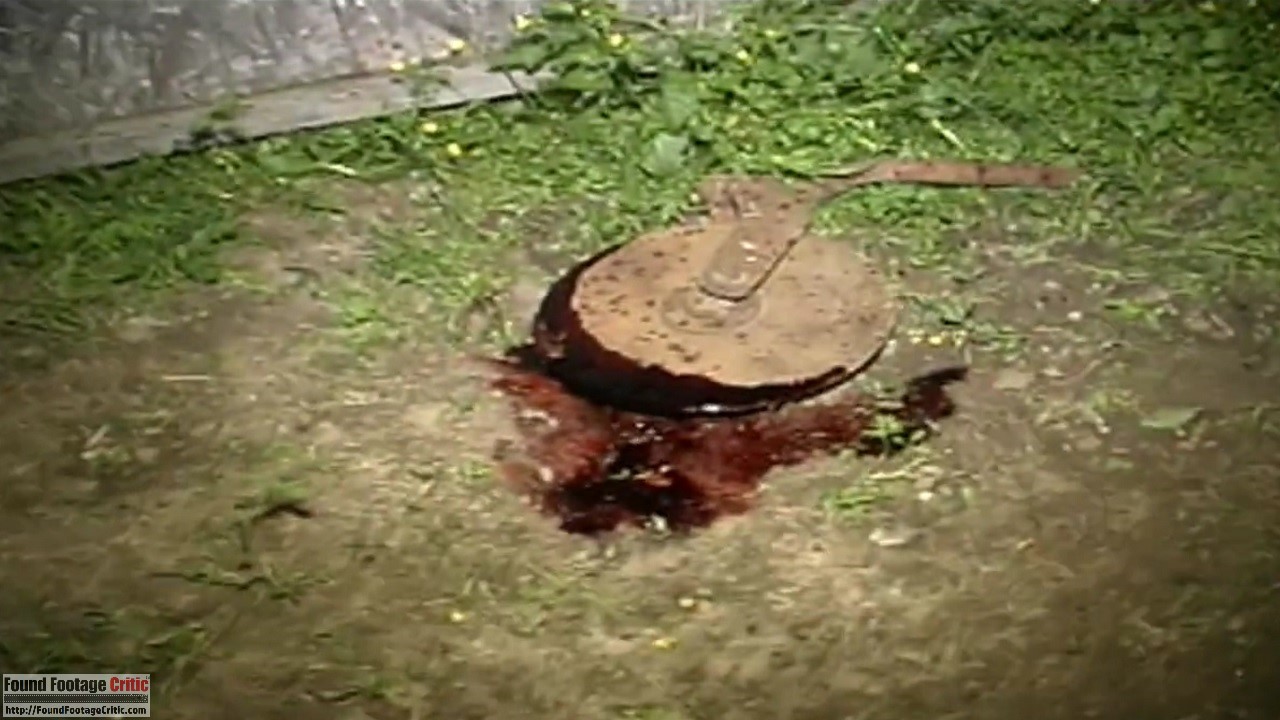
Filming Reason
The only explanation as to why this filmmaker is making this documentary is just that… he’s an aspiring filmmaker and this is his first big project, which is a sensible reason for him to be filming these experiences in most cases. Black Eyed Children: Let Me In is a mockumentary found footage film, which accounts for most of the footage captured by our protagonist, but there are also significant slices of the movie that don’t make sense for him to be filming, particularly towards the end of the story.
Found Footage Cinematography
This film is the mostly finished product made by our protagonist, which accounts for the use of tripods during talking head interviews, the use of on-screen text, jump cuts, fast-forward, censorship and non-diegetic music. For the most part, Snyder is good at keeping these impure elements of filmmaking away from his scenes of supposedly raw footage, however by the end of the film some of these post-production techniques do seep into what are supposed to be the candid moments in our filmmaker’s journey. Black Eyed Children: Let Me In does a mostly good job of maintaining its purity as a found footage film, and the cinematography looks authentic enough to keep the illusion going for most of the running time.

